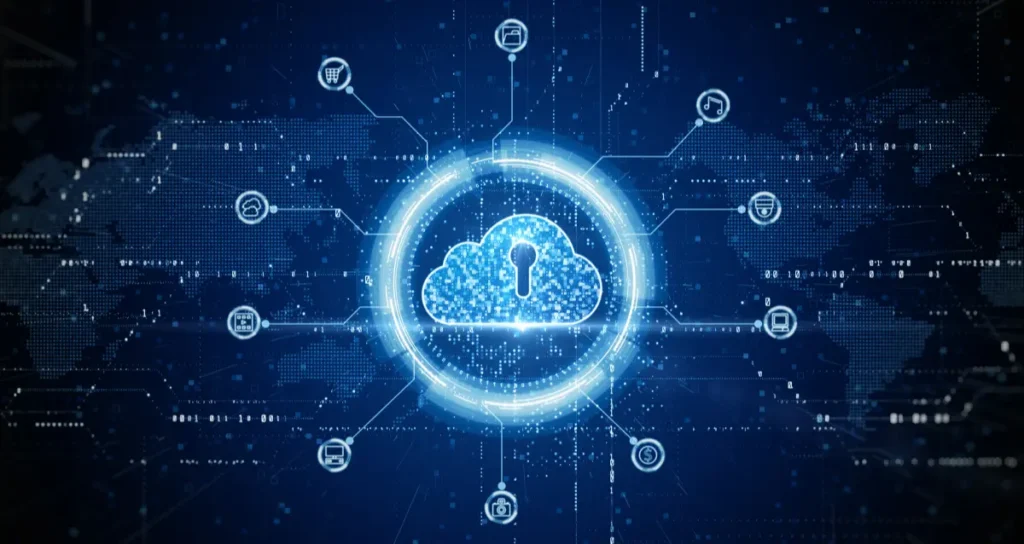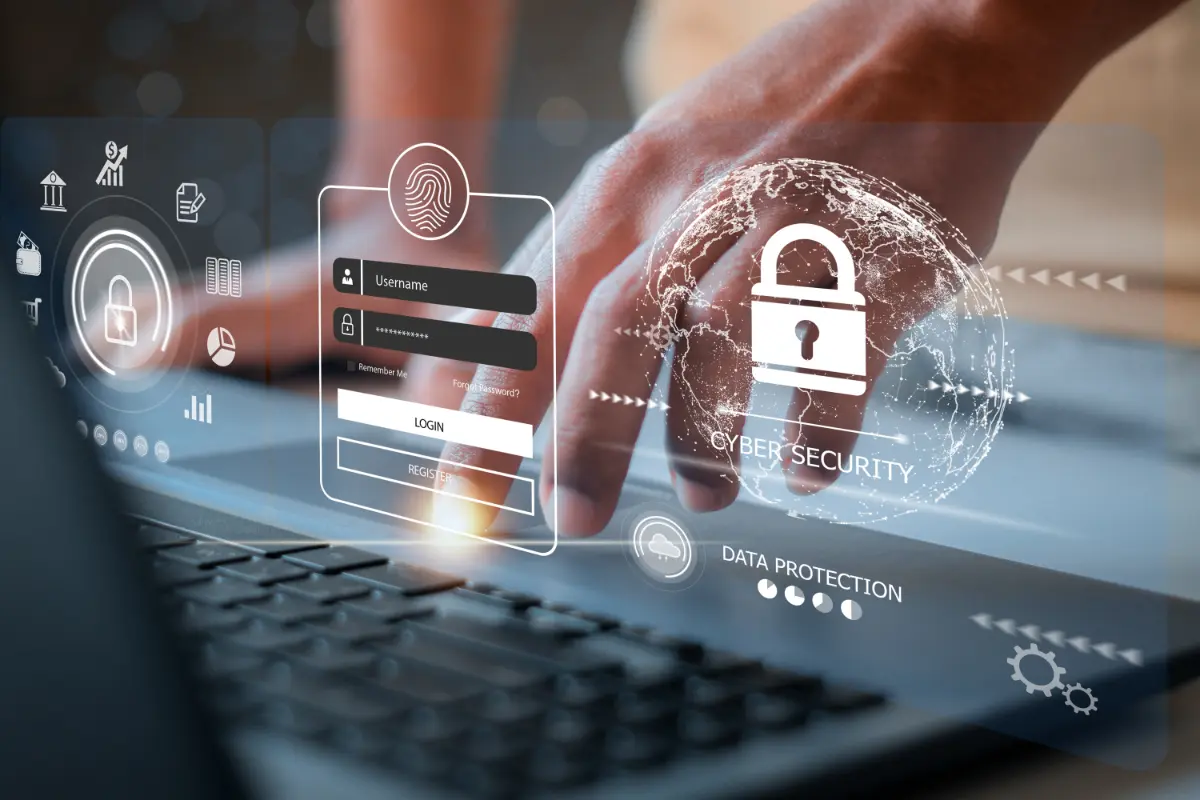Why Data Security Matters?
In today’s digital era, it is crucial to protect sensitive information. Protecting private, financial, and company information from theft, unauthorized access, and corruption requires data security. Insufficient data protection can result in severe outcomes, such as economic loss, legal consequences, and harm to an organization’s reputation.
Implementing robust security measures, including encryption, strong passwords, and regular software updates, can deter malicious attacks and unauthorized access. The increasing number of cyber threats requires businesses and individuals to prioritize information security. Failure to do so can result in a costly data breach, exposing sensitive information to cybercriminals and causing widespread harm.
Why Data Security Matters:
Common Threats to Business Data
Understanding the threats that can compromise your data is the first step to protecting it. Common threats include malware, phishing attacks, and insider threats. Malware, malicious software, can infiltrate your systems via email attachments, website downloads, or infected removable devices. Once inside, malware can cause extensive damage or steal sensitive information.
Phishing attacks, often masquerading as legitimate entities, trick employees into divulging confidential data. These attacks have grown increasingly sophisticated, using targeted approaches to exploit unsuspecting victims.
Insider threats involve current or former employees misusing their access to harm the organization deliberately or inadvertently. Since these threats originate from within the company’s trusted network, they might be challenging to identify and neutralize.
Tips to Safeguard Your Business
Regularly update software:
Ensure all systems and applications are updated with the latest security patches. Regular updates can fix vulnerabilities that cyber attackers might exploit. Maintaining up-to-date software minimizes the risk of attack. Regularly scheduling these updates and implementing automated patch management can mitigate security risks.
Use strong passwords:
Implement password management solutions to ensure robust password policies. A strong password combines letters, numbers, and symbols, making it harder for hackers to crack. Ensure you change your passwords often, and avoid using the same password for multiple accounts. Training employees on the significance of strong passwords and implementing two-factor authentication can enhance security measures.
Encrypt sensitive data:
Remember to employ encryption to safeguard sensitive data while it is being transferred and stored. Encryption guarantees that even if unauthorized individuals access data, it will remain unreadable unless the decryption key is available. This is especially critical for data transferred over the internet. Implementing end-to-end encryption for communications and sensitive transactions can further safeguard information.
Implement multi-factor authentication (MFA):
Enhance the security of your login procedures by adding a layer with MFA. MFA requires individuals to present two or more verification factors to access a system, greatly enhancing security beyond depending only on a password.
Verification factors may include something the user knows (password), something they possess (a mobile device), and something they are (biometric verification). The implementation of MFA can significantly decrease the likelihood of unauthorized entry.
Importance of Employee Training
Your staff members have an essential responsibility in safeguarding your company’s data. Providing ongoing instruction on the best cybersecurity practices to reduce risks is crucial. According to a study by Stanford University, human error accounts for approximately 88% of data breaches.
By educating employees about the latest phishing scams, safe handling of sensitive data, and proper use of software tools, businesses can significantly reduce their vulnerability to attacks. In addition, establishing clear policies and conducting regular drills helps to strengthen these practices.
Employees can learn how to identify and react effectively to real dangers by using simulated phishing attacks as part of their training. Continuous engagement through refresher courses and updated training materials ensures that employees remain vigilant and responsive to new security challenges.
Investing in Cybersecurity Tools
Investing in the right cybersecurity tools can provide your business with extra protection. Tools such as firewalls, antivirus software, and intrusion detection systems are critical. Firewalls act as gatekeepers, blocking unauthorized access to your network, while antivirus software detects and eliminates malicious programs.
Data Loss Prevention (DLP), which monitors and regulates data flows, can also aid in protecting sensitive data. By preventing sensitive data from leaving the organization’s perimeter, DLP solutions help prevent data breaches.
By putting advanced threat detection and response technologies in place, the business may strengthen its overall security posture by providing real-time monitoring and swift action against potential threats.

Staying Updated with the Latest Security Trends
The cybersecurity landscape is constantly evolving. New threats emerge daily, and staying updated with the latest trends and threats is crucial in maintaining a solid defense. Regularly consuming information from these sources can enlighten business owners and IT teams on fortifying their systems against the latest threats, ensuring they are always one step ahead of cybercriminals.
Participating in cybersecurity webinars and industry conferences and collaborating with peers can further extend your knowledge base and provide practical insights on emerging threats and effective defense mechanisms.
Real-Life Examples of Data Breaches
Real-life examples of data breaches illustrate the importance of implementing strong security measures. For instance, the 2017 Equifax breach exposed the sensitive information of over 147 million people, highlighting the need for robust data protection strategies. The fact that this breach happened due to an unpatched known vulnerability highlights the importance of updating software on schedule.
Another notable example is the Yahoo data breaches between 2013 and 2014, which compromised billions of accounts over an extended period. Yahoo’s delayed detection and response exacerbated the fallout, resulting in significant financial and reputational damage. These cases serve as critical reminders that no organization is immune. Assessing and learning from these incidents can guide businesses in enhancing their security protocols, ensuring they are prepared to prevent similar occurrences.
Conclusion
Protecting your business from data breaches is an ongoing process that requires diligent effort and investment. You can significantly reduce the risks by understanding the threats, training your employees, and utilizing the necessary tools. Stay proactive and informed to ensure the safety of your business data in the digital age.
A strategic approach to cybersecurity will protect your assets and give you the peace of mind needed to focus on growing your business. Continuously evaluating and improving your security measures will help you avoid potential threats, ensuring that your organization’s data remains secure and your customer’s trust remains intact.
FURTHER READING







